How to Potty Train an Older Dog in an Apartment? [Fast!]
Adopting an older dog is a special experience, as they offer a unique and wonderful take on canine companionship. However, senior dogs often face specific challenges, including house training issues.
Whether your senior dog isn’t house trained in general or not trained to use an indoor potty system, you can potty train an indoor dog – usually in about two weeks with minimal problems. Here’s how to potty train an older dog in an apartment.
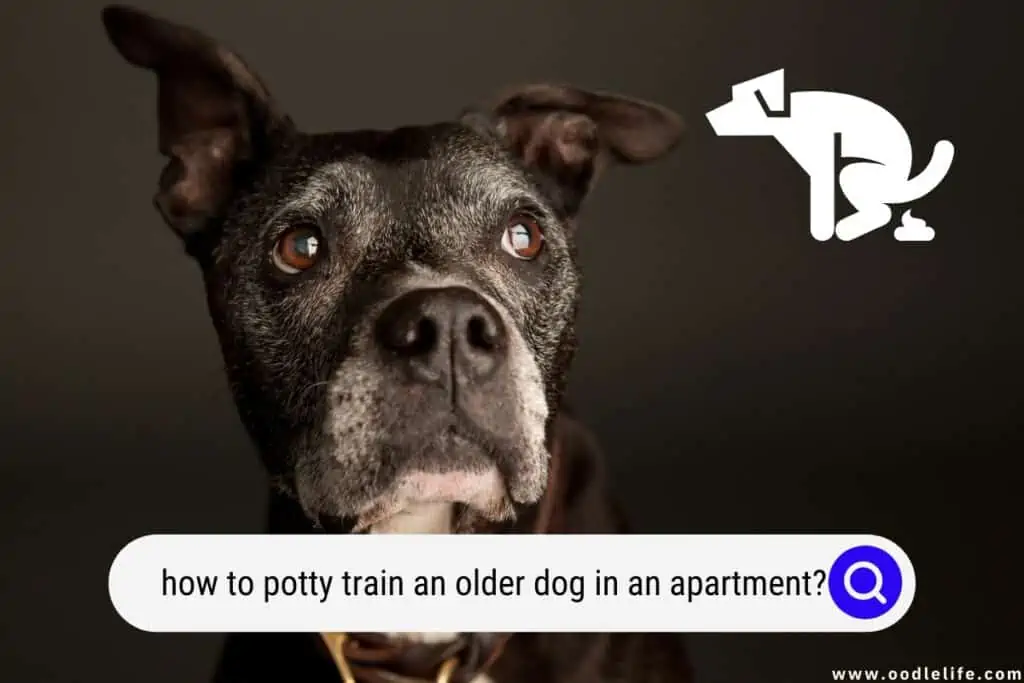
Potty Training an Older Dog: An Overview
Senior dogs may have issues understanding where to use the potty for several reasons. They might have never been trained in their youth, feel uncomfortable in a new living situation, or have mobility issues preventing them from accessing the outdoors.
Many dogs are perfectly comfortable using an indoor bathroom or dog toilet solutions, such as:
- Foor pads
- Artificial turf
- Walled “litter box” type containers
- Self-cleaning mats
Training your senior dog to use a potty indoors provides them with a warm, private location that’s easily accessible. It’s convenient in apartments and other places that require stairs or an elevator to reach the ground floor.

How to Potty Train Your Older Dog?
Senior dogs are generally easy to potty train. They typically have a calmer temperament than younger dogs. Plus, their bathroom habits are more predictable, and they can hold their bladder longer.
Here are the key strategies you’ll need to potty train an older dog in an apartment.
Know Your Dog
When learning how to potty train an older dog in an apartment, you must start with the basics. What type of dog do you have? A smaller dog has a smaller bladder and will need to use the bathroom more frequently than a larger dog.
Your dog’s general emotional state will also influence their training. For example, if you’ve recently adopted a dog who is nervous in their new surroundings, they might feel hesitant to use the bathroom.
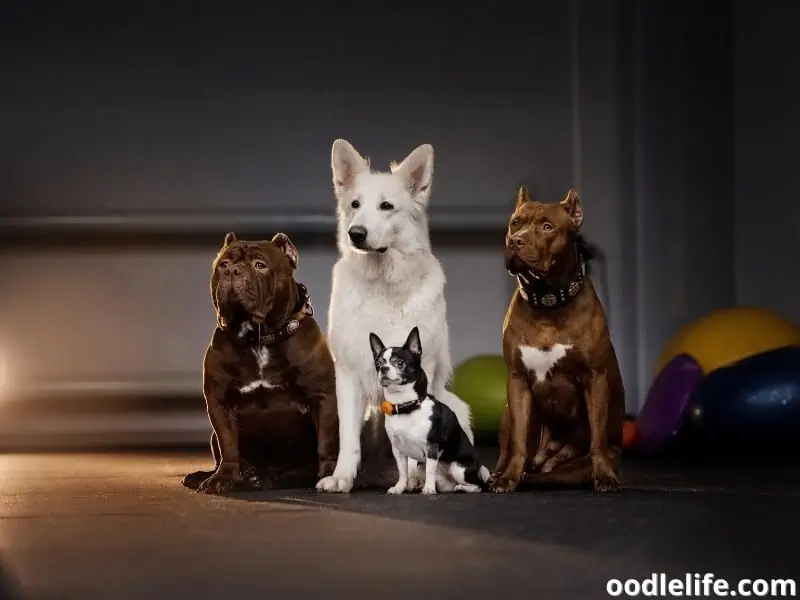
Choose a Potty Type
There are several indoor potty systems to choose from, each with pros and cons.
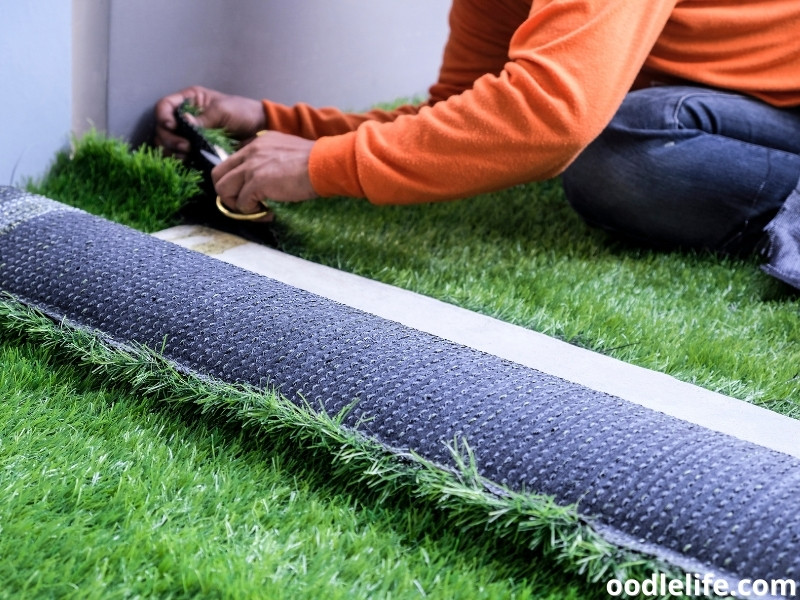
Pads
Place these absorbent pads directly on the floor. While they soak up two or three instances of urine, you’ll need to replace them fairly often, making it an ongoing expense. Additionally, you’ll need to pick up feces right away.
Artificial Turf
Artificial turf looks and feels like natural grass, which many dogs find comfortable. On the downside, you need to clean it.
Real Grass
You can place a patch of grass in a container for use either indoors or, more commonly, on a patio or terrace. You don’t need to do anything for urine removal and can simply use a poop bag for feces.
Walled Containers
Walled containers provide additional privacy for the dog but require cleaning. They can have a floor with pads, artificial turf, or other material.
Self-Cleaning Systems
Certain self-cleaning systems and litter boxes have automated washing capabilities. Remember no machine is 100% maintenance-free; you’ll still need to clean it occasionally.
I’ve found great success with real grass on the patio in the summer months and then pads in a walled container during the colder parts of the year.
Develop a Feeding Schedule
You’ll need to establish a consistent feeding schedule for your dog to help you predict when your dog needs to go to the bathroom.
Keep in mind your senior dogs also have unique nutritional needs.
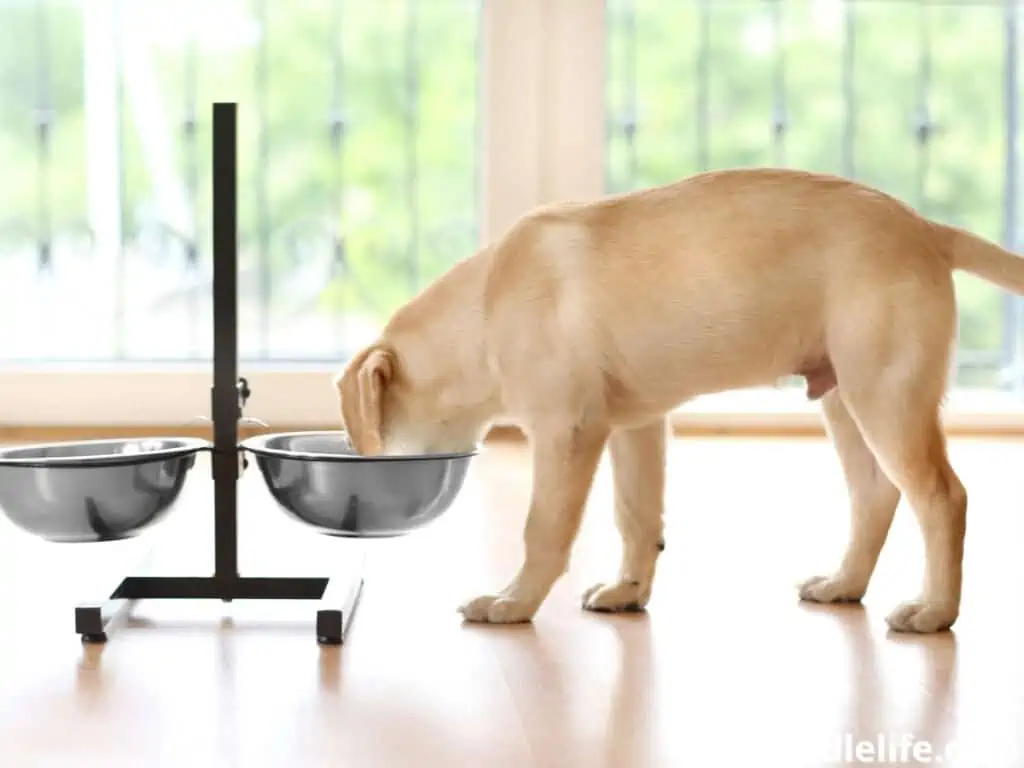
Create a Designated Bathroom Spot
You’ll want to set up one specific area for your dog to go to the bathroom. Dogs seek privacy, so choose a place away from the busy areas of the apartment.
Some effective locations in an apartment include a spare bedroom, closet, patio, or any other out-of-the-way areas.
Once you’ve set up a location, don’t change it unless absolutely necessary. You want your dog to associate a single spot as the only designated bathroom area in the apartment.
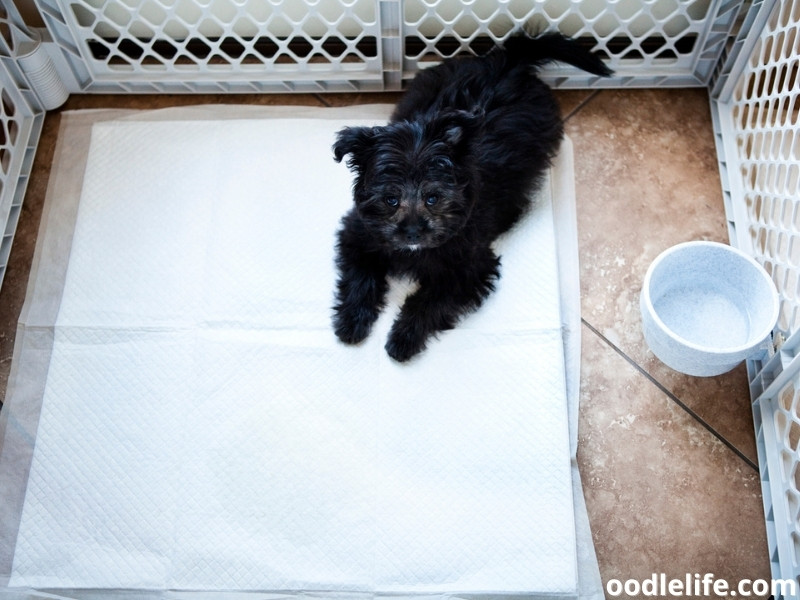
Start Right Away
Whether you’ve recently adopted a senior dog or you’ve moved into a new place, you want to start indoor potty training right away.
When training your dog, you want to take them to the bathroom area frequently, up to every 30 minutes or an hour. Take them during moments when they’ll likely need to use the restroom, such as after waking up in the morning or about an hour or two after eating.
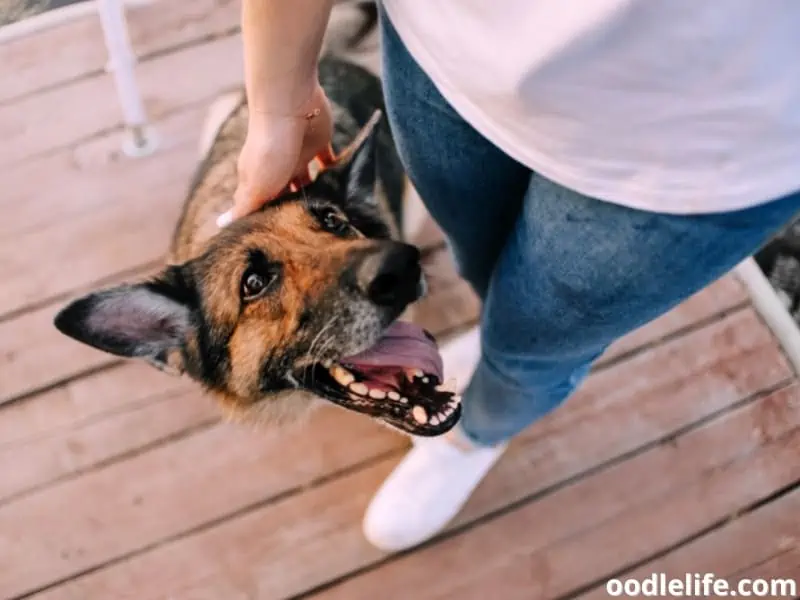
Use a Verbal Command
Issue a clear, consistent verbal command when with your dog at their potty spot. The command itself doesn’t particularly matter, but you want to remain consistent.
Say the command both before and after your dog uses the bathroom. Also, say it when you notice signs they’re about to relieve themselves, such as lifting their leg or squatting.
I typically use the command, “go potty,” because it doesn’t sound like any other command I use regularly.
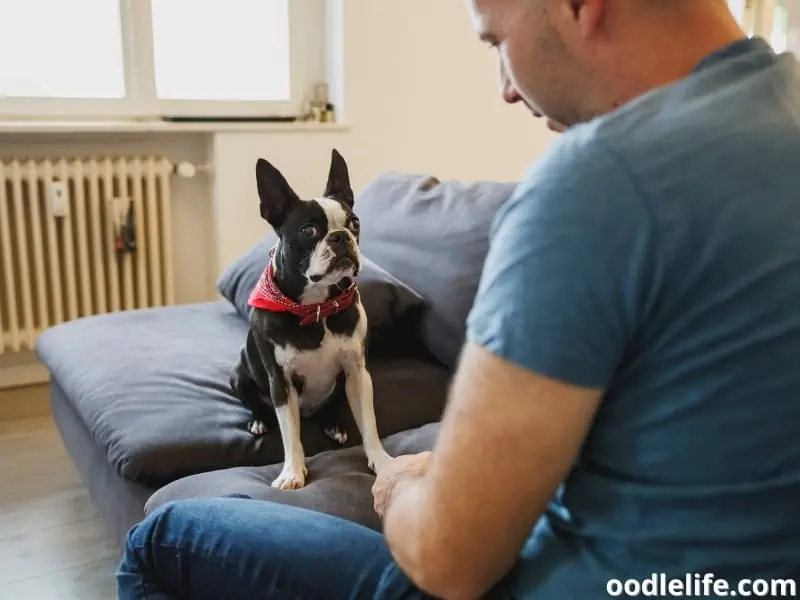
Crate Train Your Dog
Crate training is a useful tool for potty training. Your dog will naturally want to avoid soiling his sleeping space. Keeping your dog in his crate helps them stay safe while also avoiding household accidents at night or when leaving them home alone.
When crating a senior dog, you have an advantage because they’ve reached their full height, so you don’t have to worry about them outgrowing their crate. The crate size should allow the dog to stand up and turn around without strain.

Focus on Praise
Accidents happen, and you should never punish your dog for making a mistake. Instead, training your older dog to potty requires an emphasis on positive reinforcement.
When your dog successfully uses the designated potty area, praise them with positive verbal commands, play, petting, or belly rubs. You can also give him treats, but do so sparingly to avoid overfeeding.
If your dog has an accident, make enough noise to get their attention, but don’t scold them. Try to escort them to the potty area. If you can’t move them in the moment, walk them to the potty area immediately after.
Once there, use your verbal command.
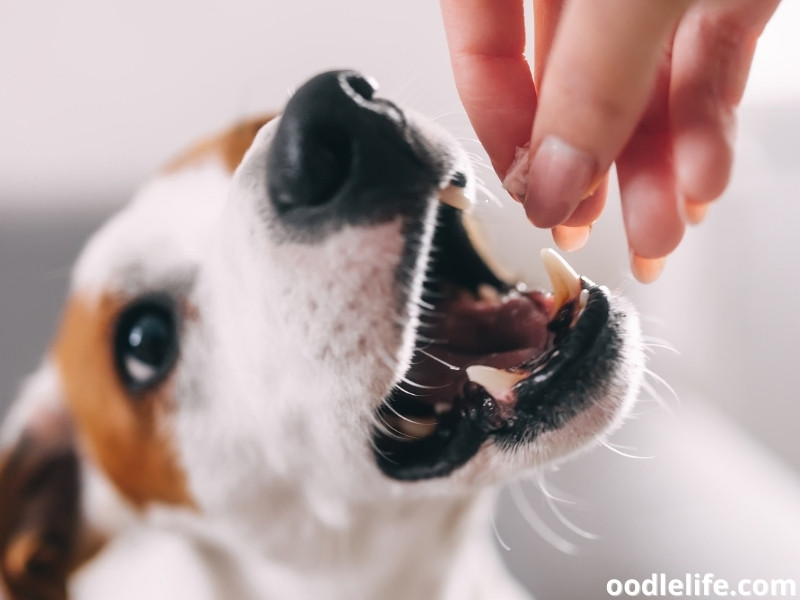
Gradually Increase Apartment Freedom
In the early days of potting training, you’ll get the best results by keeping your dog in a relatively confined area for most of the time. For example, you can use a baby gate to keep him in one room.
As with crating, your dog will feel reluctant to use the bathroom in a confined area. Every hour or two, take them to the potty area and give the verbal command.
Once your dog understands the appropriate place to use the restroom, you can allow them in larger areas and eventually around the apartment, as long as you’re home to supervise. When away, keep your dog crated.
A healthy adult dog can go about eight hours without a bathroom break, but that’s not an ideal situation, especially for older dogs who might need to go more often.
Your dog will be far more comfortable if you can provide them access to the potty every two to four hours. Plus, if a dog holds in their poop for too long, medical issues can result.
Depending on your dog’s temperament and training, you can reach a point where they can stay alone and use their indoor potty by themselves.
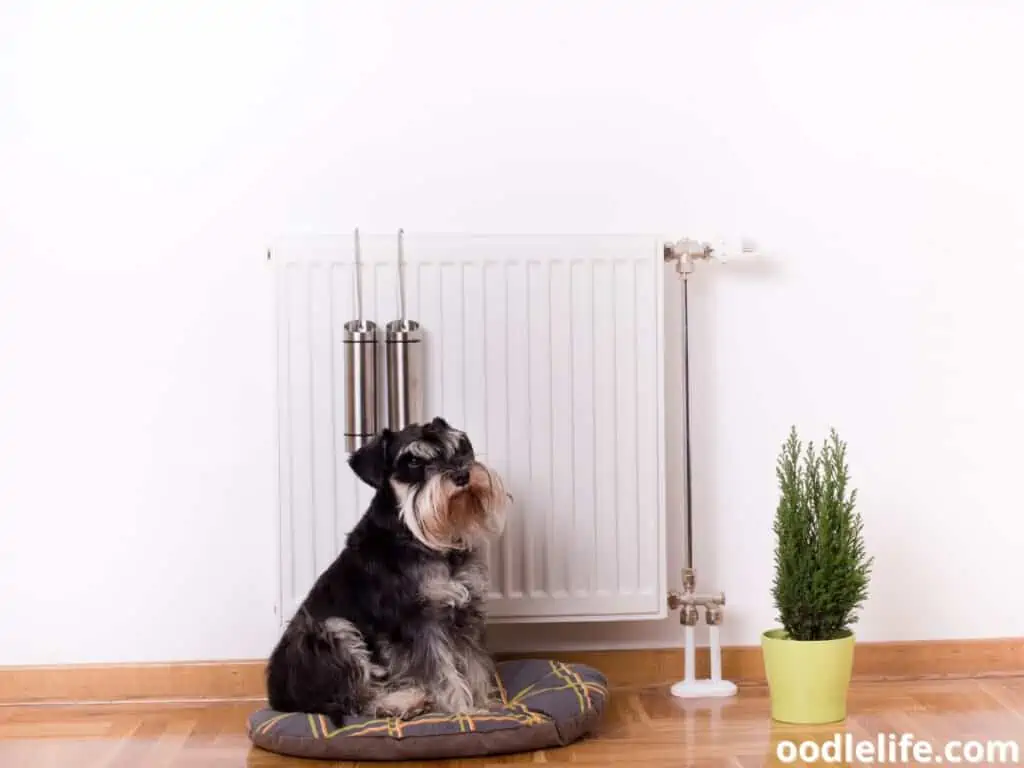
Final Thoughts
Learning how to potty train an older dog in an apartment is often an easier task than many pet owners first believe.
But by selecting a spot in your apartment, crating your dog at times, using clear commands, and focusing on positive reinforcement, your senior dog should be potty trained in about two weeks or less.